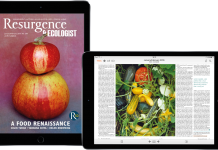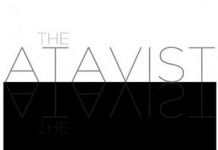 One of my major disappointments with the iPad has been a lack of good magazines to choose from on it. I used to gripe about this all the time on the Kindle and I never thought it could be worse on the iPad. This is probably more of a timing issue than anything else though. A few more magazines have trickled in with their own apps over the past few weeks and none had a bigger launch than Wired.
One of my major disappointments with the iPad has been a lack of good magazines to choose from on it. I used to gripe about this all the time on the Kindle and I never thought it could be worse on the iPad. This is probably more of a timing issue than anything else though. A few more magazines have trickled in with their own apps over the past few weeks and none had a bigger launch than Wired.
Shortly after their app arrived they announced they sold 24,000 copies in the first 24 hours. Nice start. So is this really worth the $4.99 price tag, especially since your five bucks only gets you one issue? I don’t think so. I wonder how many people will go back and buy the next edition for $4.99.
First of all, there’s no cut-and-paste functionality. On top of that, there’s no social media connectivity. Wow. How could they overlook these incredibly important features? Seriously. These guys cover all the latest and greatest technology developments and they can’t implement features from the 90’s in their initial app. Truly amazing.
There are also so many missed link opportunities. For example, DoubleTree’s URL is shown at the bottom of their ad. Wouldn’t it be convenient to let readers touch it so that it takes them to DoubleTree’s website, possibly featuring a special deal for Wired readers? The magazine could get a finder’s fee for any reservations made through that link. Even something as simple and obvious as this was missed. Btw, you’ll find a mixed bag of ads with and without links in this issue. My guess is some advertisers agreed to pay more for their ads to include links in the app edition. Perhaps Wired thought this would be a good way to test ads with and without links. The result is a very confusing user experience for the reader as you don’t know whether touching a URL will open Safari or do nothing at all. Here’s a simple rule they should follow: All URLs should open a link!
You may have also heard that Wired tried a new UI approach where you scroll horizontally from one article to the next but you scroll vertically within an article. The mix of horizontal and vertical scrolling feels forced, like a gimmick that sounded interesting in theory but has no real value in practice. And as others are starting to complain about, if everyone implements their own UI tweaks we’ll never have standards and nothing will seem intuitive. Apple really needs to get their arms around this.
Like many people, I’m not wowed by interactive ads. I’m very much wowed by interactive content though, which is why I love The Elements. The Wired app tries too hard to just create the “faster horse” that Henry Ford referred to rather than the next gen content app. If Wired wants to draw readers into the ads they’ll need to better integrate them with the content, not have them as standalone pages, separate from the content. They’re still thinking like magazine publishers and it’s holding them back. Build an integrated approach so that I discover the ads while I’m doing a deep dive in an article.
Bottom line: if this is as good as it gets I’ll keep my print subscription. There’s no need for me to fork over 5 bucks more for each pseudo-enhanced digital edition when I can get an entire year’s worth in print for $10.
Editor’s Note: this article is reprinted, with permission, from Joe Wikert’s Publishing 2020 blog. PB

































Wired’s iPad app is awesome. The Trent Reznor’s Studio article invalidates your entire opinion.
Most books and magazines don’t have the circulation of Wired. Interactivity is expensive to create, so expensive it makes little sense for a lot of digital publishing.
That’s why I’m ticked off at all the effort Adobe has devoted to making digital magazines and books do ‘dancing hamsters’ sorts of things. Adding Flash to InDesign CS5 makes little sense when there are numerous practical features Adobe has yet to add: Smart/named frame linking, endnotes, dictionaries that only apply to a single document or book or project, sidenotes automatic shaded or boxed paragraphs (like Word), etc.
For digital work, Adobe really needs to create a sister application to InDesign that’s designed to exchange data easily with ID, but without the restrictions imposed by ID’s page layout/frame based structure. Ebooks don’t have pages and currently can’t handle frames. Ebooks need a separate application, not a kludged ID.
In fact, it’s disgusting that formats such as ePub can’t handle text formatting much more complex than a simple novel. It a bit like Henry Ford foolishly attempting to make a car that flies before working a a decently useful form of land transport. Forget the interactivity. Just gives us the ability to create ebooks with one-fourth the expressive sophistication of printed books!
We’ve seen this before: The silly idea that the ability to do something means that the public is eagerly awaiting it and thus that it must be done. The tech industry has been gushing about interactivity and multi-media since CD-ROMs in the late 1980s, but the public has never displayed any sustained interest in mixing medias. They prefer their movies to be movies and their books to be books. Combining the two is a bit like putting ice cream on your hamburger at a picnic. Each is good in its own place and time but not mixed willy-nilly in the same creative product.